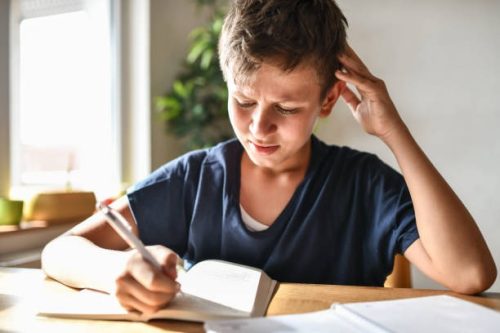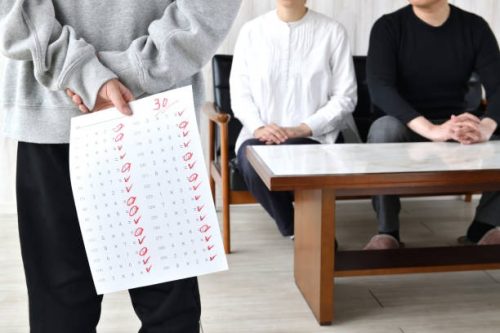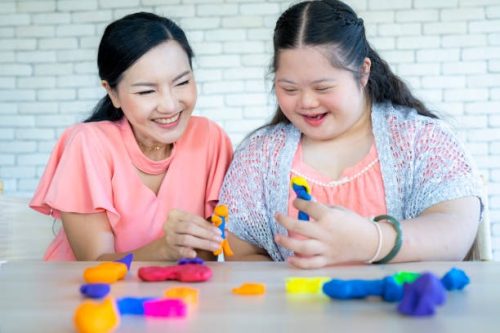Before diving into the article, you must know that a learning disability differs from a learning difficulty. Learning disability is a condition that affects individuals’ perception of things and complicates every area of their lives. On the other hand, learning difficulty is described as a hindrance to a specific form of learning that does not influence the overall intellectual capacity of the individual.
Let’s Talk About Learning Disability

Source: pixabay.com
What Is A Learning Disability?
Learning disability is a condition that affects the brain’s capacity to take in, store, and recall basic information. It affects all types of persons in several forms with varying levels of severity. Usually, a learning disability becomes noticeable as it interferes with basic learning skills such as writing, reading, time management, organization, and social communication skills.
Students with learning disabilities often experience problems with classroom interaction as they struggle with slow progress in understanding quality executive function, mathematics, problem-solving, planning and decision-making, and understanding social situations.

Source: pixabay.com
Impacting Academic Development
The condition affects students differently as each individuals struggle across diverse academic settings and task difficulties. As an example in writing, students with LD may have difficulty organizing their written work or putting their thoughts into paper. Most of the time, they struggle with their handwriting, spelling, punctuation, and grammar. In reading, individuals with a learning disabilities often experience issues in reading fluently and may not comprehend what they read. They also struggle to recognize words or break them down into individual sounds.
In some cases, individuals with LD often care less about their achievement as they focus more on delayed learning development. They constantly have problem-solving issues and often have difficulty understanding visual-spatial relationships. Students with learning disabilities usually are unable to learn number facts. They struggle in computation and doing basic arithmetic calculations using signs and symbols.

Source: pixabay.com
Impacting Social Life
Learning disability in children can also have a particular impact on social life. It can negatively impact one’s ability to make friends, dragging down self-esteem and increasing insecurities. They often deal with miscommunication as they struggle to interpret body language, read facial expressions, and recognize tones of voice.
Individuals with learning disability struggle with taking turns in conversation. They usually take all the time when talking, ask for repetition, or do not listen.
How To Know If A Person Has A Learning Disability?
It may seem easy to spot an individual with a learning disability and may interpret it as a learning difficulty. However, parents should be the ones to know if their child has LD. They are the ones who should recognize the potential signs and symptoms of the condition at an early stage.
However, the teacher may consult with them when the students are having difficulty in the classroom if in case parents are unable to notice the warning signs. Some of which include:
inability to distinguish letters, numbers, and sounds,
eye-hand coordination problems
short attention span,
difficulty following directions,
poor writing or reading ability,
poor memory,
disorganization and other sensory trouble
slow and inaccurate with sequencing

Source: pixabay.com
What Can You Offer To A Person With A Learning Disability?
Despite the condition, people with learning disabilities are not entirely hopeless. Most of them can succeed, provided they have access to specific learning instructions and compensatory strategies that enable them to overcome difficulties.
A student or individual with a learning disability may receive a specific educational plan or IEP. The program caters to the individual’s needs and strengths. The results should be documented by a professional for further psychological assessment that can be used to regulate the progress and possible treatment.
In the classroom setting, teachers can motivate and help students with learning disabilities to focus on their specific areas of strength to create teachable moments to reinforce positive development. The educator can start in small steps and proceed to complicated ones if required. They can provide multiple examples to students and demonstrate solutions for challenging situations. They can offer feedback and praise as well as encourage practice.
Teachers can also provide cooperative learning for students with LD by creating a friendly classroom environment with the minimized competition. They can also encourage opportunities for shared learning and joint activities for improved social connection.
Aside from the specific educational plan, encouraging students with a learning disability to develop new skills and talents can also help. Making them feel appreciated and well-accepted for their community contributions greatly encourage students with disability to thrive more for success.

Source: pixabay.com
Takeaway
It is essential to remember that every student is unique and requires specific learning needs. Thus, it is significant to ensure that the learning materials inside or outside the classroom should be accessible for students with learning disabilities. It will help if parents and teachers use differentiated strategies for more effective developmental results. They may also use the recommended accommodations and interventions set up with the help of a team of professionals.
